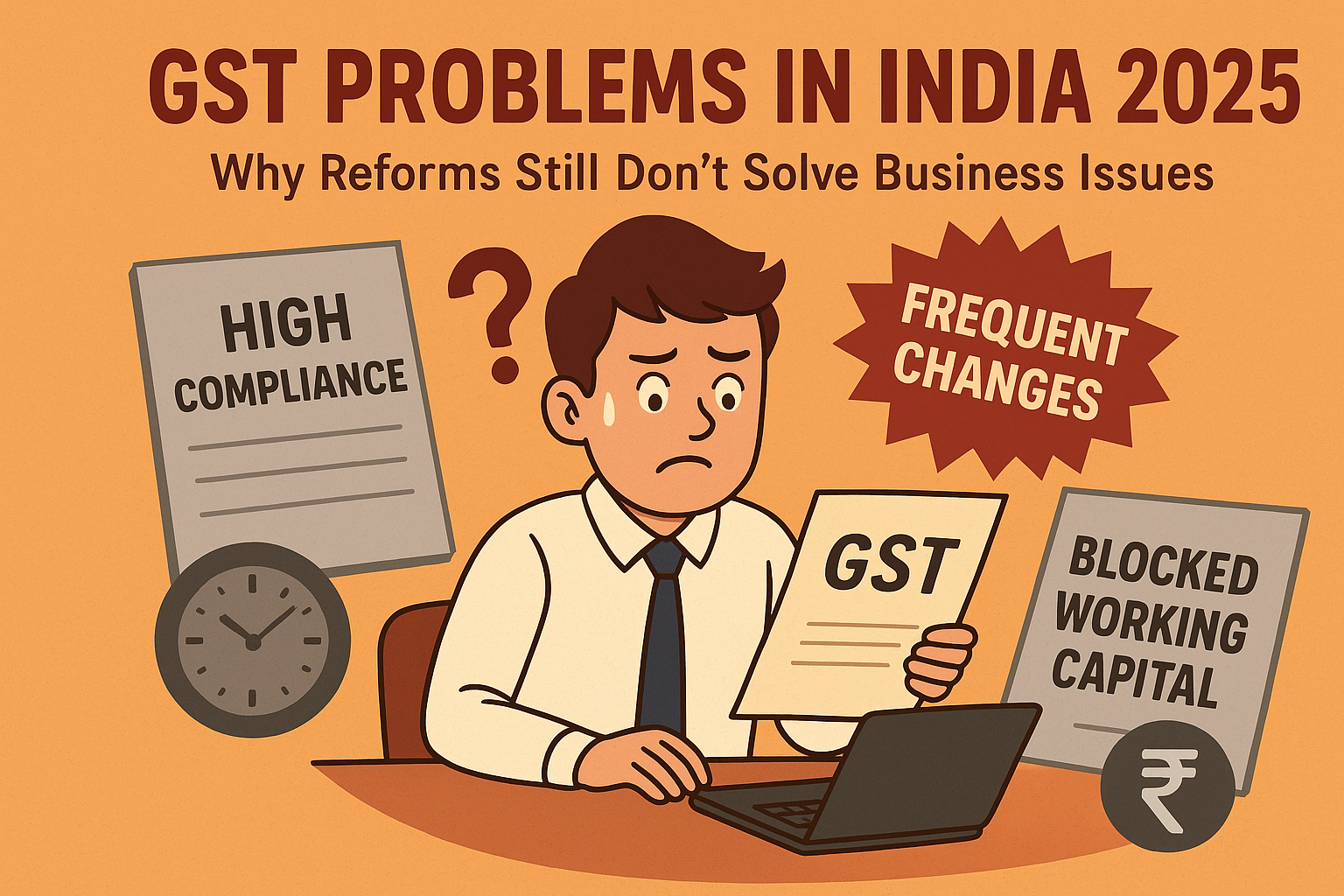The Goods and Services Tax (GST), launched in India in July 2017, was meant to be a big reform that would replace multiple indirect taxes, create one common market, and make business easier. The government promised it would boost growth, cut tax evasion, and simplify compliance but still gst problems in india 2025.
But eight years later, GST has turned into a burden for many businesses, especially small and medium enterprises (SMEs). Instead of supporting growth, it often feels like a “growth-suppressing tax.” Even after several reforms, the main problems remain unresolved.
Table of Contents
What GST Promised vs. What Happened
The idea of GST was simple: “One Nation, One Tax.” It was supposed to reduce prices for consumers and make compliance easier for businesses.
In reality, the system is complicated, compliance-heavy, and costly. SMEs, which are the backbone of India’s economy, feel the biggest impact.
Why GST Suppresses Growth
1. High Compliance Burden
Businesses have to file multiple returns (GSTR-1, GSTR-3B, annual returns, etc.). Small traders and SMEs often cannot afford accountants or software, which increases their costs.
2. Working Capital Problems
The Input Tax Credit (ITC) system, designed to avoid double taxation, often blocks business money. Companies pay GST first and then wait months for refunds or face mismatches. This reduces liquidity and slows down operations.
3. Frequent Changes in Rules
Almost every GST Council meeting brings new updates—new forms, new rates, or new compliance steps. Constant changes create confusion and make it hard for businesses to plan ahead.
4. Too Many Tax Slabs
Instead of one tax, GST has five main slabs: 0%, 5%, 12%, 18%, and 28%. This creates disputes and confusion about which goods and services fall into which category. A simpler system with fewer slabs would be better.
5. Technology Issues IN GST
The GST Network (GSTN) often faces glitches and downtime. Small traders in semi-urban and rural areas, with limited digital skills, struggle the most.
Current Reforms: Not Enough in GST 2.0
The government has introduced some relaxations, like quarterly filing for small taxpayers and e-invoicing to curb tax fraud. In 2025, GST 2.0 reforms were launched with promises of simplification and rationalization.
But the core problems—delayed ITC refunds, complex compliance, and tax slab confusion—are still not fixed. Reforms so far are more cosmetic than structural.
What Needs to Change helps in GST Problems in India 2025
- Simplify Tax Slabs: Move to just three categories—low, standard, and high.
- Faster Refunds: Section 54 of the CGST Act, 2017 deals with refunds of tax, including Input Tax Credit (ITC). For faster Refunds Create a time-bound system for ITC refunds to protect business cash flow.
- Reduce Compliance Load: Allow small businesses to file just one return annually.
- Stronger Digital Systems: Improve GSTN with user-friendly design and better support.
- Policy Stability: Avoid frequent changes and give businesses a predictable environment.
Conclusion
GST was introduced as a historic reform to boost India’s economy and simplify taxation. But for many businesses, it has become a growth-suppressing tax. The frequent changes, compliance burden, blocked refunds, and complex slabs are hurting SMEs the most.
Current reforms are too limited and do not address the deeper structural issues. For GST to truly support growth, bold reforms are needed—simplification of slabs, faster refunds, reduced compliance, stronger systems, and stable policies.
Only then will GST transform into a tax that supports businesses and strengthens India’s economic growth.
Contact taxgiveindia.com for taxation related services.
